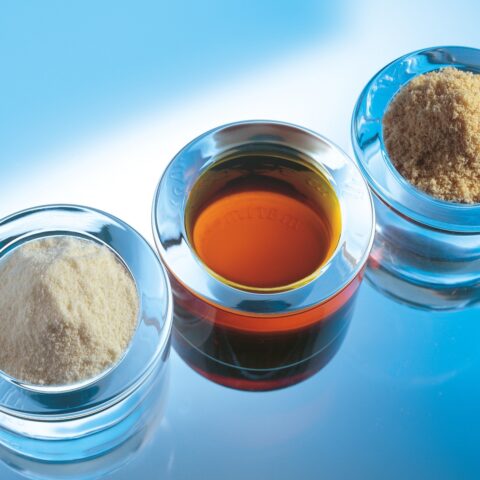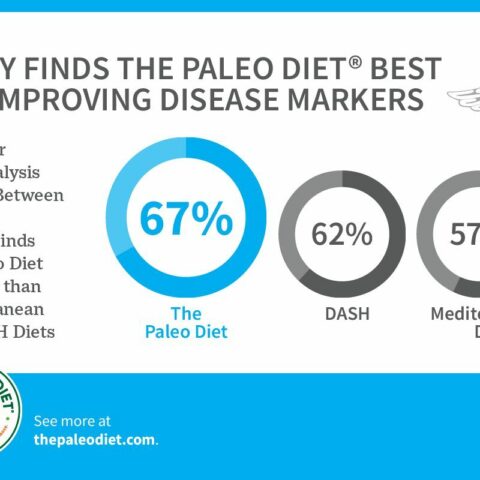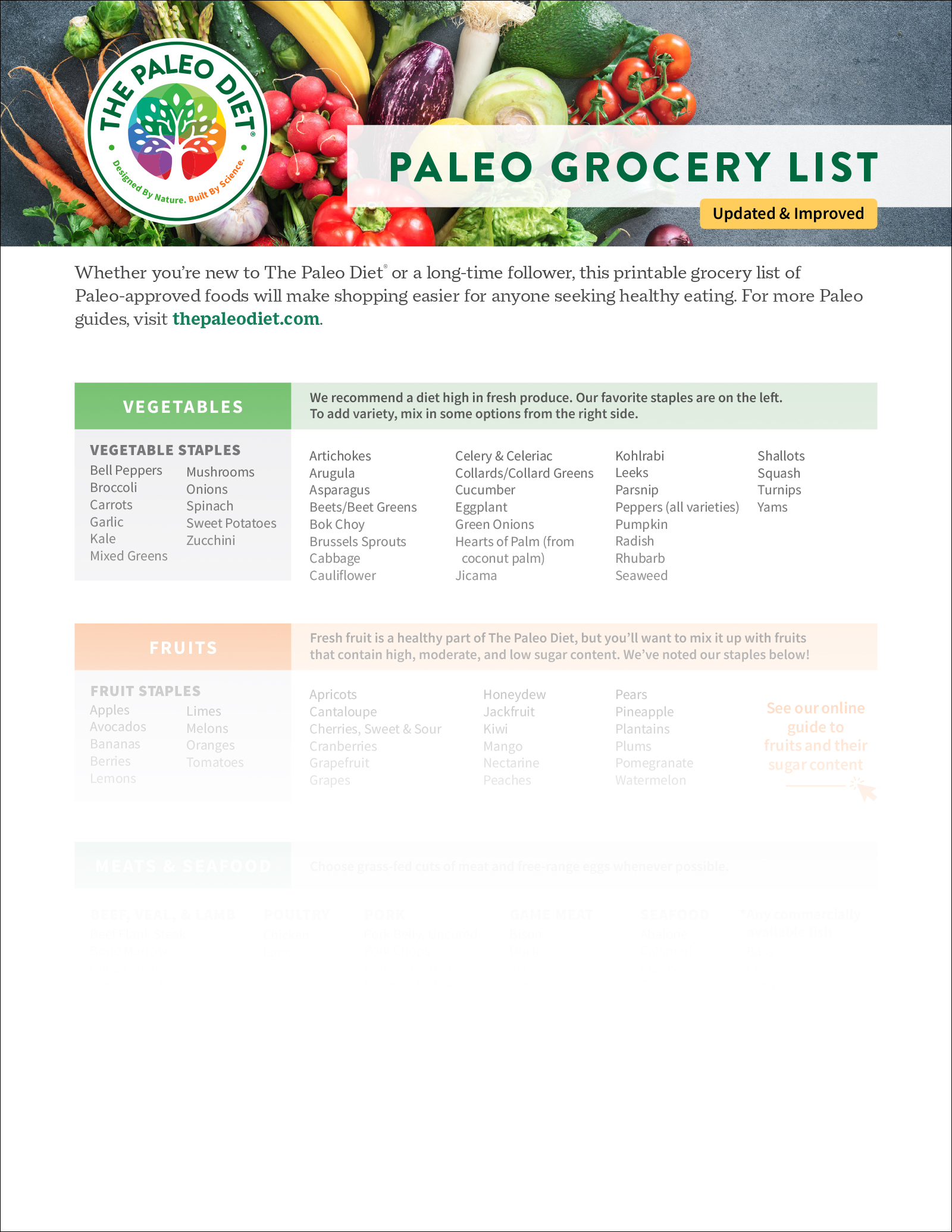Glossary of Common Additives, Their Uses, and Health Concerns

While we can’t list them all, here is a quick list of common additives (both natural and synthetic) grouped by purpose with their uses in food products and examples of where the science is leaning for any concerns.
RELATED: Regulation of Food Additives in American Food Production
Commonly Used Preservatives
The most common additives used as preservatives make up two groups. Group 1 includes ascorbic acid and manufactured citric acid, while Group 2 includes rosemary extract, sodium benzoate, BHA, and BHT.
Ascorbic Acid
Known as vitamin C, this chemical compound is used as a natural preservative.
Uses: prepackaged fresh fruits and vegetables, canned fruits and vegetables, pureed and freeze-dried fruit, pickled condiments, smoothies, flours, juices, sparkling juices, and bottled teas.
Manufactured Citric Acid
Manufactured citric acid (MCA) is the most common additive for food, pharmaceuticals, and dietary supplements worldwide. The process of MCA has gained negative attention because it is fermented from the fungus Aspergillus niger, a black mold and known allergen; however, the mold is removed.
Though recognized as safe, there are individuals with a genetic predisposition to a damaging inflammatory cascade of joint and muscular pain, respiratory symptoms, and irritable bowels.1
Uses: canned seafood, dried fruit, fruit-flavored sparkling waters and soda, dips, salsas, premade deli salads and meals, yogurt, nuts, and frozen fish.
Rosemary Extract
This natural compound, also known by its active ingredients carnosol and carnosic acid, slows or stops the growth of harmful microbes in food. The extract is a natural replacement for sodium benzoate, calcium propionate, potassium sorbate, BHA, and BHT (see below for more).
Uses: fresh and frozen turkey, chicken, beef, fish (ground, sausage, deli, parts, or cuts), shelled nuts and nut butters, microwave popcorn, soups, broth and stock, coconut water, seasoning blends, salad dressings, mayonnaise, snack chips and crackers, granola bars, and cereals.
Sodium Benzoate
This common additive in sausage and beer, known as a lantibiotic, kills microbes that spoil foods. A 2024 study from the University of Chicago revealed that these antimicrobial bacteria benefit food safety. However, they are also essentially antibiotics that have the potential to kill off healthy bacteria in the human gut and contribute to antibiotic resistance.2 This research includes common food preservatives, such as sodium benzoate, calcium propionate, and potassium sorbate.
Uses: sodas, fruit juices, condiments, non-fermented sauerkraut, canned vegetables, sausages, and beer.
BHA & BHT
BHA (butylated hydroxyanisole) and BHT (butylated hydroxytoluene) are closely related synthetic antioxidants used as food preservatives to prevent the oxidation of fats and oils in foods. Consumption of BHA and BHT can potentially trigger or worsen symptoms of hives or urticaria in some individuals.3
Experimental studies on animals (not humans) in the 1980s found that BHA increased the risk of stomach cancer in rats.4 However, a six-year human study in the Netherlands, published in 2000, on the consumption of creamy salad dressings and mayonnaise did not find an association with stomach cancer for typical intake of BHA and BHT.5
In 2025, West Virginia passed legislation prohibiting the use of BHA in food products.6
- BHA Uses: sausage, pepperoni, bratwursts, salami, cooking oils, lard, cookies, premade mashed potatoes, potato chips, popcorn, cookies, and powdered drink mixes.
- BHT Uses: sausage, pepperoni, bratwurst, crackers, roasted nuts, cereals, cooking oils, lard, fried salty snacks, mashed potato granules, seasoning blends, candy, and gum.
Commonly Used Food Dye Colors
The following are the most common additives used for food coloring. Notably, California and West Virginia have banned many artificial food dyes,6 which may pressure the FDA to take regulatory action in the future.
Natural Food Coloring
The most used natural food colors are derived from foods and include ingredients like beta-carotene for deep red, yellow, or orange; chlorophyll for green; anthocyanin for deep blue; and turmeric for yellow.
- Beta-Carotene Uses: cheese, butter, solid fats, ice cream, salad dressings, condiments, bread, orange juice, buttered popcorn, and gelatin.
- Chlorophyll Uses: pickled vegetables, condiments, green tea beverages, seasoning mixes, pistachio-flavored snacks, cookies, and prepared meals.
- Anthocyanin Uses: candy, fruit syrups, fruit sparkling waters, cereals, cakes, doughnuts, and baking mixes.
- Turmeric Uses: beverages, teas, spice mixes, ketchup, mustard, pickled vegetables, wasabi, pasta, juices, sauces, and salsa.
Red 40
This synthetic food color, also known as Allura Red, is made from petroleum and has been part of the U.S. food system for 40 years.
Animal in vitro and in vivo studies show that consuming Red 40 with a high-fat diet may contribute to gut dysbiosis and low-grade chronic inflammation in animal test subjects.7,8 Mouse studies that replicate a lifetime of consumption show the possibility of reticuloendothelial tumors—tumors of the immune system’s network of cells that filter out foreign particles and dead cells.9
Although the findings aren’t definitive, pediatricians cite concerns about its use for children, particularly for youth with attention and learning disorders.
Uses: beverages, baked goods, dessert powders, candy, cereals, frozen popsicles, cherry pie filling, and pickled beets.
Yellow 5
Also known as tetrazine, this dye is the second most used after Red 40. The dye may be contaminated with benzidine and 4-aminobiphenyl, known carcinogens, particularly in imported food products.8,10,11 Known concerns are allergic reactions, aspirin intolerance, and tartrazine sensitivity.12,13
Uses: candy, salty snacks, baked goods, beverages, dessert powders, cereals, gelatin desserts, pickles, and pet food.
Yellow 6
Also called Sunset Yellow, this is the third most used food dye. Case studies and studies in individuals with asthma and skin sensitivities report that ingestion of Yellow 6 in medications or food resulted in gastrointestinal reactions, hives, and skin lesions.8,14
Uses: baked goods, cereals, beverages, dessert powders, candy, gelatin, desserts, sausage.
Blue 1 & Green 2
These two dyes, named Brilliant Blue and Fast Green, are chemically identical except for one hydroxyl group (one oxygen and one hydrogen atom). Though no independent studies outside of industry-sponsored research point to concerns about carcinogenesis, health advocates would like to see further studies to know how these dyes may affect fetal, infant, and childhood brain development.8
- Blue Uses: baked goods, beverages, dessert powders, candies, and cereals.
- Green Uses: matcha drinks; pickle relish; guacamole; prepackaged, canned, and frozen green vegetables; canned or jarred green chiles, salsa, and tomatoes with chiles.
Titanium Dioxide
Titanium dioxide (TiO2) is a synthetically produced white pigment manufactured from naturally occurring ores. The FDA allows for TiO2 provided the quantity of titanium does not exceed 1% by food weight.15 Foods that contain TiO2 may be labeled as “artificial color” or “colored with titanium dioxide,” though it is not required to be listed. The colorant is also used in food contact packaging materials regulated as food additives.
In recent years, the size of TiO2 has been reduced to nanoparticles for novel applications in candy-making. The Environmental Defense Fund, Center for Science, and the Public Interest and Environmental Working Group about toxicity and safety have called for a safety review.16 Natural replacements for some TiO2 applications include rice starch, calcium carbonate, and modified starch.
Uses: hard shell chocolate candy, mints and peppermint, baking decorations, cotija cheese, queso dips, roasted pumpkin seeds, and horchata drink mixes.
Commonly Used Emulsifiers
The food industry uses various emulsifiers to stabilize foods and maintain a creamy texture for products that contain fats and water. These emulsifiers are divided into hydrocolloids and synthetic emulsifiers.
Within hydrocolloids there are food emulsifiers that include common kitchen ingredients like mustard, oils, egg yolks, nut butters, and vinegars that are used in natural and organic foods to thicken, stabilize, and blend ingredients. Hydrocolloids can also include naturally derived thickening agents from plant, animal, aquatic, and microbial sources.
Though emulsifiers are used in small quantities, we may eat more than we realize because of our overdependence on ultra-processed foods. Concerns exist about some of these ingredients and their contribution to gut inflammation, particularly polysorbate 80 and carboxymethylcellulose (more below).17
Healthy individuals who produce specific antibodies (IgG and IgE) may suffer from hidden food immune reactivities and sensitivities from gums used as emulsifiers.18 The research is relatively new, and future studies are needed to assess how these and other emulsifiers impact health.
Carrageenan
Sourced from red seaweed, carrageenan gives foods a gel-like consistency. There are three forms of carrageenan, each with a unique purpose in food manufacturing: iota (soft gel), kappa (brittle gel), and lambda (thickener). Individuals with sensitive stomachs find it beneficial to avoid carrageenans because of gastric concerns and gut inflammation.
Some physicians warn about the potential association between a higher intake of emulsifiers and prostate and breast cancer, based on a prospective dietary French study of more than 100,000 adults published in 2024.19 The research identified 60 food additives classified as emulsifiers or emulsifying salts and considered the sum of their consumption.
According to the study, “the absolute risk of developing breast cancer (as a first incident cancer) for a woman aged 60 was 4.1% in the none-to-low exposure to carrageenan emulsifiers category, 4.6% in the medium exposure category, and 5.2% in the third (highest) exposure category.” Noting that cancer is a multifactorial pathology, one specific nutritional factor (such as exposure to carrageenan) “does not drastically increase absolute risks per se.”
There is a claim in the digital media space that when stomach acids break down food-grade carrageenans, they form poligeenan, a known carcinogen. However, according to the data, this reaction only happens in petri-dish laboratory conditions and does not happen in animal or human stomachs.20 Non-food grade carrageenans contain the carcinogen; however, in foods, “poligeenan can only be formed when carrageenan is subjected to harsh acid hydrolysis under laboratory conditions,” write the researchers.
Uses: infant formulas, yogurt, cream/half-half, dairy milk alternatives, ricotta, ice cream, canned pumpkin, and processed ham.
Guar Gum
This ingredient is from the seeds of the guar plant, Cyamopsis tetragonoloba, a member of the legume family. Guar gum emulsifies, thickens, and stabilizes ingredients commonly used to provide smooth textures for products that require cold temperatures.
There are two primary forms: regular and partially hydrolyzed guar gum (PHGG). The latter, PHGG, is predigested with enzymes and is less likely to cause gastric upset in individuals with sensitive digestive systems or inflammatory bowel syndrome.
Uses: ice cream, dairy milk alternatives, ricotta cheese, cream cheese, protein powders, and creamy desserts.
Lecithins
Though all lecithins act as emulsifiers, not all have the same composition. Lecithin can be extracted from various sources, such as soybeans, sunflowers, and eggs, leading to variations in final products. Consumers should understand the source and the risk of exposure to potential allergens.
Uses: candy, chocolate, peanut butter-based confections, cookies, nonstick cooking sprays, pudding mixes, protein drink mixes, beef jerky, and pre-cooked rice,
Xanthan Gum
Sourced from a fermentation process of the bacterium Xanthomonas campestris, found on the leaves of some vegetables, including broccoli, cabbage, and cauliflower. This gum is mostly used for gluten-free baking to reinforce the structure.
For some individuals, xanthan gum can cause gut inflammation; however, to date, animal and human retrospective dietary studies do not show causation of increased cancer risk.21
Uses: gluten-free flour, gluten-free baked goods/mixes, protein powders, salad dressings, dips, ice cream, mayonnaise, cheese sauces, and mixed egg meals/sandwiches.
CMC
Carboxymethylcellulose (CMC, E466) is a synthetic, water-soluble polymer derived from cellulose. It is used as a thickening, emulsifying, and stabilizing food agent.
A study comparing 20 natural and synthetic emulsifiers found that CMC and polysorbate 80 (below) may enhance gastrointestinal inflammation by impacting gut bacteria that could lead to inflammation.17
Uses: fruit juices and nectars, candy, coconut milk and cream, seasoned bacon, yogurt, salty snacks, breaded chicken, and baked goods.
Polysorbate 80
Known for keeping ice cream cold and creamy, this ingredient is also used to improve the volume of baked goods and keep spices and flavors dispersed in liquids. As with CMC, more clinical research is called for to understand how this synthetic emulsifier may alter the gut microbiome and whether to suggest limiting usage in food production.17
Uses: ice cream, whipping cream, pickles, and fruit-flavored sodas.
Distilled Monoglyceride
This monoglyceride and diglyceride compound creates uniform, small fat globules during the homogenization of liquids with proteins for high-protein bars, baked goods, and ice creams. These emulsifiers contain small amounts of naturally occurring trans fats, similar to meats, though according to FDA reviews, they do not present a health risk.22
Uses: filled frozen pasta, prepared frozen Mexican meals, sausage, creamers, ice cream, spreadable fats, peanut butter, cereals, bagels, tortillas, breads, salty snacks, and baking mixes.
Packaging as a Food Additive
According to FDA regulations, compounds in food packaging that come in contact with food (e.g., liners, boxes, cans, bottles, and trays) are categorized as additives. These chemical agents prevent foods from sticking and fogging and stabilize them in light, cold, and heat. Packaging continues to be a contentious issue because of the introduction of endocrine-disruptive chemicals like bisphenol-A (BPA) and phthalates.
Bisphenol A
BPA is a resin that hardens plastic containers and lines metal cans. Chemicals called phthalates in BPA can act like estrogen, which can change the timing of puberty, decrease fertility in men and women, increase body fat, and affect the endocrine, nervous, and immune systems.
BPA is banned in baby bottles, sippy cups, and infant formula packaging.23 Certified organic brands of canned fruits and vegetables voluntarily no longer use BPA. California, Connecticut, Delaware, Illinois, Maine, Maryland, Massachusetts, Minnesota, New York, Vermont, Washington, and Wisconsin banned BPA in food containers for young children. Connecticut and Maine’s laws also restrict BPA for all reusable food and beverage containers.
The European Food Safety Commission banned the use of BPA in 2024. As of 2023, though the FDA banned its use for children’s products, the agency has not found adequate evidence in the evaluated studies to prompt a revision of its policy on BPA in food packaging.22
Uses: drink cans, jar lids, and bottle caps.
PET or PETE
Polyethylene terephthalate (PET) is a glossy, hard-shell plastic made from thermoplastic resins derived from petroleum. Most of the world’s recycled food plastic is PET.
PET plastics are not biodegradable and can break down into microplastics, which are pervasive in our oceans, waterways, and municipal drinking water.24 In 2024, scientists developed a new technique to assess the presence and impact of extremely small particles called nanoplastics, which are widespread but poorly understood. Previous research had discovered plastic particles in human blood, lungs, gut, feces, and reproductive tissues like the placenta and testes. The health outcomes of human exposure to nanoplastics are now under investigation.25
Uses: clamshell clear food packaging and beverage bottles.
Further Reading
For more investigation on your own, we recommend these databases and resources:
- USDA FoodData Central database. To search for common additives in specific brands, click the tab labeled “Branded Foods.”
- Environmental Working Group’s Additive Guide.
- Chemical Cuisine Food Additive Safety Ratings from the Center for Science in the Public Interest.
- TRUEPALEOTM and PaleoFLEXTM food certification from The Paleo Diet®.
References
- Sweis IE, Cressey BC. Potential role of the common food additive manufactured citric acid in eliciting significant inflammatory reactions contributing to serious disease states: A series of four case reports. Toxicol Rep. 2018;5:808-812. Published 2018 Aug 9. doi:10.1016/j.toxrep.2018.08.002 https://pubmed.ncbi.nlm.nih.gov/30128297/
- Zhang ZJ, Wu C, Moreira R, et al. Activity of Gut-Derived Nisin-like Lantibiotics against Human Gut Pathogens and Commensals. ACS Chem Biol. 2024;19(2):357-369. doi:10.1021/acschembio.3c00577 https://pubmed.ncbi.nlm.nih.gov/38293740/
- Goodman DL, McDonnell JT, Nelson HS, Vaughan TR, Weber RW. Chronic urticaria exacerbated by the antioxidant food preservatives, butylated hydroxyanisole (BHA) and butylated hydroxytoluene (BHT). J Allergy Clin Immunol. 1990;86(4 Pt 1):570-575. doi:10.1016/s0091-6749(05)80214-3. https://pubmed.ncbi.nlm.nih.gov/2229816/
- Fukushima S, Sakata T, Tagawa Y, Shibata MA, Hirose M, Ito N. Different modifying response of butylated hydroxyanisole, butylated hydroxytoluene, and other antioxidants in N,N-dibutylnitrosamine esophagus and forestomach carcinogenesis of rats. Cancer Res. 1987;47(8):2113-2116. https://pubmed.ncbi.nlm.nih.gov/3829000/
- Botterweck AA, Verhagen H, Goldbohm RA, Kleinjans J, van den Brandt PA. Intake of butylated hydroxyanisole and butylated hydroxytoluene and stomach cancer risk: results from analyses in the Netherlands Cohort Study. Food Chem Toxicol. 2000;38(7):599-605. doi:10.1016/s0278-6915(00)00042-9 https://pubmed.ncbi.nlm.nih.gov/10942321/
- Callahan, A. (2025, March 24). West Virginia Bans 7 Artificial Food Dyes, Citing Health Concerns. The New York Times. https://www.nytimes.com/2025/03/24/well/west-virginia-food-dye-ban.html
- Zhang Q, Chumanevich AA, Nguyen I, et al. The synthetic food dye, Red 40, causes DNA damage, causes colonic inflammation, and impacts the microbiome in mice. Toxicol Rep. 2023;11:221-232. Published 2023 Sep 6. doi:10.1016/j.toxrep.2023.08.006 https://pubmed.ncbi.nlm.nih.gov/37719200/
- Food Dyes, A Rainbow of Risks, Center for Science and the Public Interest, cspinet.org, https://www.cspinet.org/sites/default/files/attachment/food-dyes-rainbow-of-risks.pdf
- Borzelleca JF, Olson JW, Reno FE. Lifetime toxicity/carcinogenicity studies of FD & C red no. 40 (allura red) in mice. Food Chem Toxicol. 1991;29(5):313-319. doi:10.1016/0278-6915(91)90202-i https://pubmed.ncbi.nlm.nih.gov/2060889/
- Health Hazard Alert – Benzidine, o-Tolidine and o-Dianisidine Based Dyes, Centers for Disease Control, https://www.cdc.gov/niosh/docs/81-106/default.html
- IARC Working Group on the Evaluation of Carcinogenic Risks to Humans. Chemical Agents and Related Occupations. Lyon (FR): International Agency for Research on Cancer; 2012. (IARC Monographs on the Evaluation of Carcinogenic Risks to Humans, No. 100F.) 4-AMINOBIPHENYL. https://www.ncbi.nlm.nih.gov/books/NBK304408/
- Neuman I, Elian R, Nahum H, Shaked P, Creter D. The danger of “yellow dyes” (tartrazine) to allergic subjects. Clin Allergy. 1978;8(1):65-68. doi:10.1111/j.1365-2222.1978.tb00449.x https://pubmed.ncbi.nlm.nih.gov/627044/
- Grzelewska-Rzymowska I, Szmidt M, Kowalski ML, Roźniecki J. Sensitivity and tolerance to tartrazine in aspirin-sensitive asthmatics. Allergol Immunopathol (Madr). 1986;14(1):31-36. https://pubmed.ncbi.nlm.nih.gov/3962814/
- Michaëlsson G, Juhlin L. Urticaria induced by preservatives and dye additives in food and drugs. Br J Dermatol. 1973;88(6):525-532. doi:10.1111/j.1365-2133.1973.tb08014.x https://pubmed.ncbi.nlm.nih.gov/4717410/
- (2025, February 25). Title 21, Chapter I, Subchapter A, Part 73, Subpart A: 73.575 Titanium dioxide. [Review of Title 21, Chapter I, Subchapter A, Part 73, Subpart A: 73.575 Titanium dioxide.]. Code of Federal Regulations. https://www.ecfr.gov/current/title-21/chapter-I/subchapter-A/part-73/subpart-A/section-73.575
- Food Additive and Color Additive Petitions Under Review or Held in Abeyance, FDA.gov, accessed March 4, 2025. https://www.hfpappexternal.fda.gov/scripts/fdcc/index.cfm?set=FAP-CAP&id=CAP_3C0325
- Naimi S, Viennois E, Gewirtz AT, Chassaing B. Direct impact of commonly used dietary emulsifiers on human gut microbiota. Microbiome. 2021;9(1):66. Published 2021 Mar 22. doi:10.1186/s40168-020-00996-6 https://pubmed.ncbi.nlm.nih.gov/33752754/
- Vojdani A, Vojdani C. Immune reactivities against gums. Altern Ther Health Med. 2015;21 Suppl 1:64-72. https://pubmed.ncbi.nlm.nih.gov/25599187/
- Sellem L, Srour B, Javaux G, et al. Food additive emulsifiers and cancer risk: Results from the French prospective NutriNet-Santé cohort. PLoS Med. 2024;21(2):e1004338. Published 2024 Feb 13. doi:10.1371/journal.pmed.1004338 https://pubmed.ncbi.nlm.nih.gov/38349899/
- Chen, H., F. Wang, H. Mao, and X. Yan. 2014. Degraded ʎ-carrageenan activates NF-kB and AP-1 pathways in macrophages and enhances LPS-induced TNF-α secretion through AP-1. Biochimica Et Biophysica Acta 1814, 2162–70 doi:10.1016/j.bbagen.2014.03.011. https://pubmed.ncbi.nlm.nih.gov/24641824/
- EFSA Panel on Food Additives and Nutrient Sources added to Food (ANS), Mortensen A, Aguilar F, et al. Re-evaluation of xanthan gum (E 415) as a food additive. EFSA J. 2017;15(7):e04909. Published 2017 Jul 14. doi:10.2903/j.efsa.2017.4909 https://pubmed.ncbi.nlm.nih.gov/32625570/
- EFSA Panel on Food Additives and Nutrient Sources added to Food (ANS), Younes M, Aggett P, et al. Re-evaluation of mono- and di-glycerides of fatty acids (E 471) as food additives. EFSA J. 2017;15(11):e05045. Published 2017 Nov 10. doi:10.2903/j.efsa.2017.5045 https://pubmed.ncbi.nlm.nih.gov/32625340/
- Bisphenol A, FDA.gov. https://www.fda.gov/food/food-packaging-other-substances-come-contact-food-information-consumers/bisphenol-bpa
- Dhaka V, Singh S, Anil AG, et al. Occurrence, toxicity and remediation of polyethylene terephthalate plastics. A review. Environ Chem Lett. 2022;20(3):1777-1800. doi:10.1007/s10311-021-01384-8 https://pubmed.ncbi.nlm.nih.gov/35039752/
- Plastic Particles in Bottle Water, NIH Research Matters. January 2024. https://www.nih.gov/news-events/nih-research-matters/plastic-particles-bottled-water
Kimberly Lord Stewart
Kimberly Lord Stewart is an author, journalist, and culinary expert. Her work highlights the importance of incorporating whole foods into daily diets and emphasizes the connection between food and overall well-being.
More About The Author


